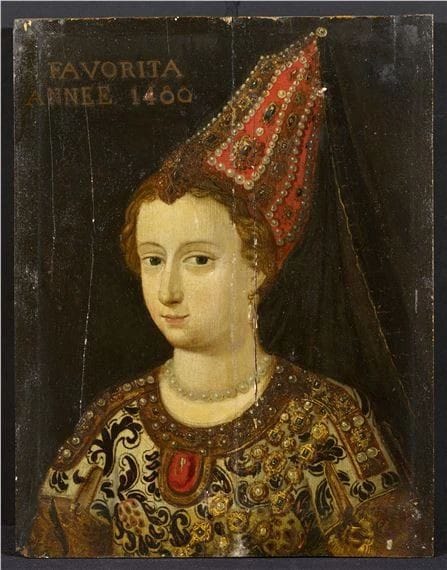Gülbahar Hatun: Mother of Sultan Bayezid II and Wife of Mehmed the Conqueror
The Life and Legacy of Gülbahar Hatun: Mother of Bayezid II and Pillar of Ottoman History

Emine Gülbahar Mükrime Hatun (Ottoman Turkish: گل بھار مکرمه خاتون), meaning “spring rose” and “hospitable,” was a significant figure in Ottoman history as the concubine of Sultan Mehmed II, also known as Mehmed the Conqueror, and the mother of Sultan Bayezid II. Her life, marked by political influence, maternal devotion, and property disputes, provides a fascinating glimpse into the complexities of Ottoman court life and the role of women in shaping the empire’s history.
Early Life and Origins
The Ottoman vakfiye (endowment deed) describes Gülbahar as Hatun binti Abdullah, indicating she was a Christian slave who converted to Islam, as was customary for many women entering the Ottoman harem. Historical sources suggest she was of either Albanian or Greek origin.
One theory, supported by Venetian ambassador Iacopo de Promontorio-de Campis in 1475, claims she was an Albanian slave. Another posits that she was Greek, potentially confusing her with another Gülbahar Hatun, mother of Sultan Selim I. Albanian historian Shuteriqi speculated that Gülbahar might have been a daughter of Gjergj Arianiti and Maria Muzaka, a noble family from Albania. If so, her capture during Mehmed II’s campaign near Elbasan would explain her presence in the Ottoman harem.

Entrance to the Ottoman Court
Gülbahar entered Mehmed II’s harem in 1446, while he served as governor of Amasya. She quickly rose in prominence, bearing him at least two children:
- Şehzade Bayezid (Bayezid II): Born in 1447 in Demotika, he later became Sultan in 1481.
- Gevherhan Hatun: Born in 1446, she married Ughurlu Muhammad in 1474.
In 1451, when Mehmed ascended the throne, Gülbahar accompanied him to Edirne. Ottoman tradition required princes to serve as provincial governors, and Gülbahar followed her son Bayezid when he was appointed to govern Amasya in 1455 or 1456. Except for a brief period in 1457, when she attended Bayezid’s circumcision ceremony in Constantinople, Gülbahar and Bayezid remained in Amasya until Mehmed’s death in 1481.
Influence and Property Management
Gülbahar was deeply concerned about her son’s future and the security of her own properties. She endowed several villages and fields to the Enderun Mosque in 1474 to protect them from being reclaimed by the state.
In 1468, Mehmed II granted her the village of Bağluca, which she sold in 1473. However, the land was later reclaimed during a land reform in 1478, creating a legal dispute. Despite her property concerns, Gülbahar maintained a prominent position in court affairs, demonstrating her resourcefulness and political acumen.
As the Sultan’s Mother (Valide Hatun)
When Bayezid II ascended the throne in 1481, Gülbahar became Valide Hatun, the highest-ranking woman in the empire. She moved to the Old Palace (Saray-ı Atik) with other members of the imperial family. Bayezid regularly visited her, although her letters indicate that she sometimes felt neglected.
In a poignant letter to Bayezid, Gülbahar wrote:
“My fortune, I miss you. Even if you don’t miss me, I miss you … Come and let me see you. My dear lord, if you are going on campaign soon, come once or twice at least so that I may see your fortune-favored face before you go. It’s been forty days since I last saw you. My sultan, please forgive my boldness. Who else do I have beside you … ?”
Gülbahar also exercised significant influence over Bayezid, advising him on matters of governance and appointments. In one letter, she warned him against Hersekzade Ahmed Pasha and expressed favor for other statesmen like Ayas Pasha and Hizirbeyoğlu Mehmed Pasha.
Legacy and Contributions
Gülbahar Hatun’s legacy is preserved through her charitable works and her role as the mother of Sultan Bayezid II. In 1485, Bayezid established a mosque and a school in Tokat in her honor, reflecting her importance in Ottoman history. Her mausoleum, located in the courtyard of the Fatih Mosque in Istanbul, was rebuilt after being damaged in the 1766 Istanbul earthquake, signifying the enduring respect for her memory.
Gülbahar’s story is a testament to the influence women held in the Ottoman court, particularly as mothers of reigning sultans. Her correspondence with Bayezid reveals her strong will and maternal devotion, while her involvement in property disputes highlights her acumen in safeguarding her family’s interests.
Explore More Ottoman History
Discover the fascinating history of the Ottoman Empire through cinematic storytelling and insightful articles. Watch Mehmed: Sultan of Conquests and other epic series like Kuruluş Osman in HD at OsmanOnline.live. To learn more about influential figures like Gülbahar Hatun and the rich legacy of the Ottoman dynasty, visit OsmanOnline.me for engaging articles and historical insights. Experience the past like never before!




